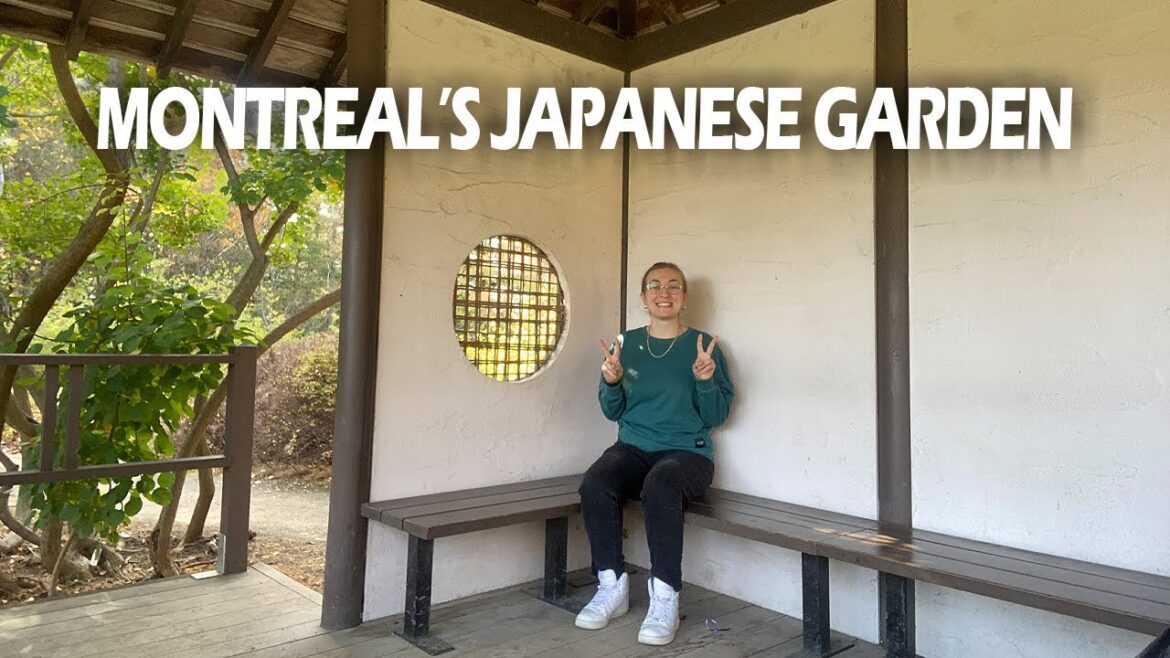Hi everyone so today we’re going to the Chinese and Japanese Gardens of Montreal they’re in the botanical gardens I was there yesterday but um we’re gonna go again today so that we can give them more time Thank you the Japanese Pavilion is resemblant of a traditional Japanese house and its goal is to celebrate Japanese culture and art it was created and opened on June 22nd 1989. The Pavilion is made up of four rooms and this room is called the nomura art gallery where there are temporary
Exhibitions these exhibitions are traditionally made dishes with elements that are important to Japanese culture specifically within nature the other rooms include a book collection which is Montreal’s Botanical Garden book collection of Japan’s history culture arts Gardens Bonsai and Ikebana or flower arrangements as well as a tea room where there’s traditional
Style for the tea ceremony and decorations that are also reflected within tea ceremonies there is an importance to Japanese culture within each of these pieces of nature represented in these dishes the cherry tree for example symbolizes the arrival of spring Thank you Foreign The pine tree is also well known for its symbolism of longevity The last room in the Pavilion is the Toyota exhibition Hall and this Hall specifically is made for artistic exhibitions and educational activities so the artistic exhibitions are these cases that you see that exhibit different pieces of Japanese culture the first one having been items that are used during the
Japanese New Year the second being just items that are used day by day or decorational items this case here is items that are used for funerals or special occasions different bracelets or amulets or envelopes that are given for different occasions and the educational purpose of these cases is so that people learn more
About Japanese culture and what is done during specific Japanese celebrations holidays and much more there was also a class going on during the time that I was here in this exhibition Hall where a bunch of children were being read Japanese folk tales but also being taught about elements in Japanese culture lots of
Which were in these cases Foreign This is the Tea Room within the Pavilion it’s actually a lot bigger and more open space than lots of tea rooms that I have seen before but one of the most integral pieces of the Tea Room is that scroll that you see there Tea Garden was created to create kind of a natural and calming atmosphere for guests before they entered inside of the Tea Room Unfortunately the Tea Garden was closed off and we couldn’t go in but it was donated by the city of Hiroshima and given in memory of someone so we respected it Foreign Spell is an expression of the Friendship signed between Hiroshima and Montreal every year a ceremony commemorates the event of August 6 1945 when the first nuclear bomb was dropped on the city of Hiroshima and the peace Bell is rung for that occasion In the stroll Garden we can see a wooden zigzag Bridge here which is called yatsuhashi and there are seven more Stone Bridges and a rounded wooden one throughout the rest of the garden thank you So on was typically a shelter covered with grass that was far away from the noises of town where people could reconnect with nature but it changed into a sukia so that visitors at the Japanese garden can enjoy it and still take in the landscape The choice of plants for a Japanese garden is based on their value and significance throughout the year and so spring embodies renewal summer is restrained in comparison Autumn is the cyclical movement of all life and winter is a time for rest so during this time it was transitioning from Autumn into
Winter and most of the plants that are used are typically plants native to Japan Most important element in a Japanese garden is Stone symbolizing longevity and omnipresence of natural forces second most important is water the stone is acting as an anchor for landscape and things are usually decorated around the stone Foreign Like that’s all for the Japanese garden but like that is kind of all for the Japanese garden it’s not as big as I thought also it’s like you know it’s becoming winter so everything’s kind of Dead Fall is basically like almost over so you don’t really see a lot of things
Boomed or leafy but it’s so nice Foreign


2 Comments
Didnt know we have it in mtl. I visited one in portland or. 🥂
Now that it's been over a year could you talk about what its like living in Philly?